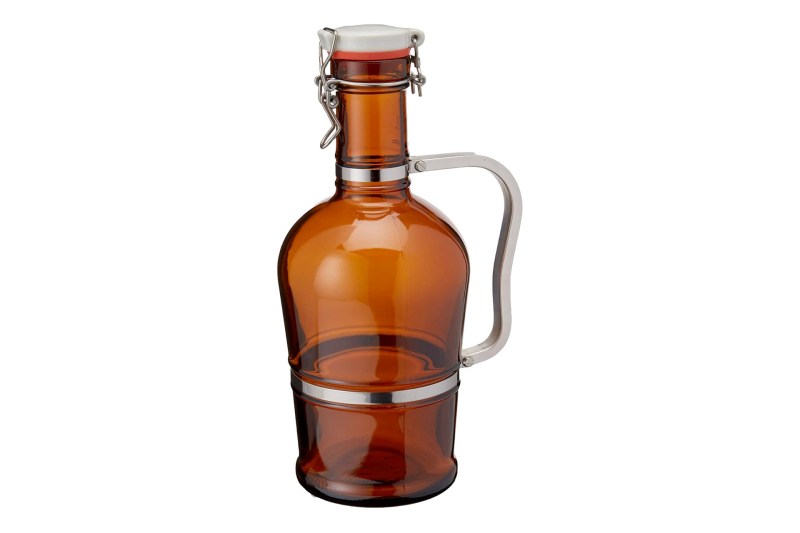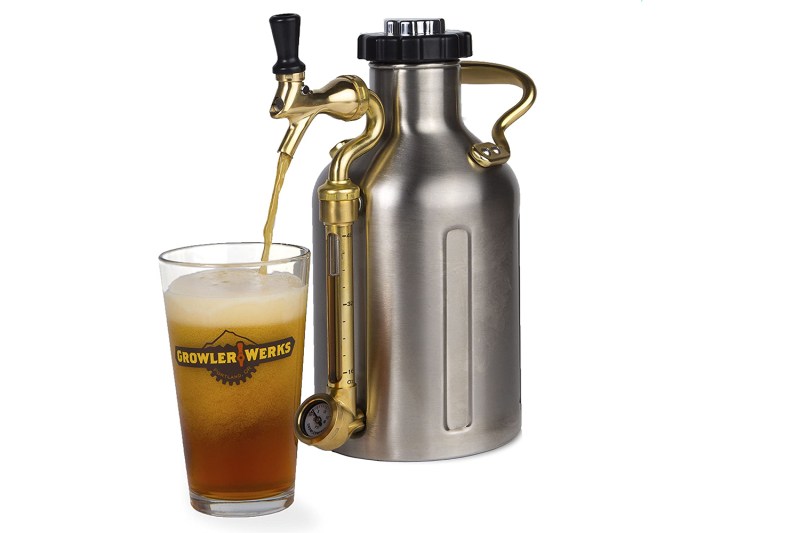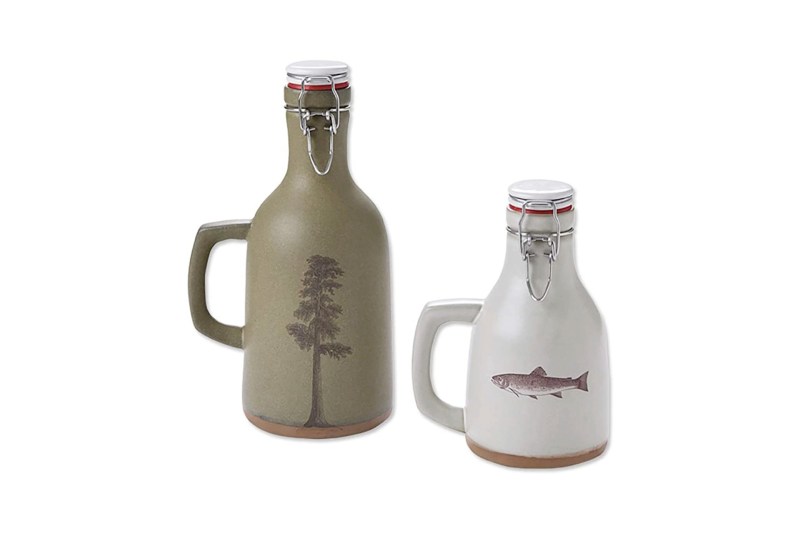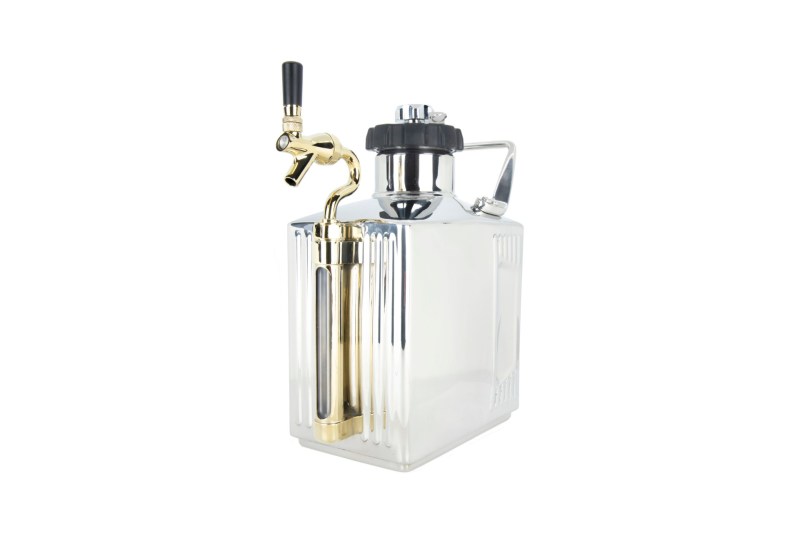A couple of decades into the craft beer movement, it’s high time we reconsider the growler. Sure, it’s a vessel that can transport four pints of draft beer. But it’s also a dynamic container, capable of utility as well as fetching a few style points.
Let’s begin with the basics: Growlers aren’t just for beer. It’s why the item was invented, sure, but a growler can hold other things too. In fact, given its ability to handle carbonation and temperature particularly well, the growler is also a great home for sparkling wine, cider, or even a premixed portable cocktail like a mimosa or a gin and tonic.
But the growler is ideal for beer, especially straight-from-the-tap ales that are alive and very much perishable. The growler protects the CO2 and keeps things cool, preserving the grassy kick of a fresh-hop beer or the fruitiness of a good sour ale. It allows you to hang on to the freshness and vigor you’d get from your favorite brewpub’s elaborate draft system and take it with you camping, picnicking, or to the river for some fly-fishing. Here are some of our top growler picks.
Related Guides
Types of Growlers
Glass Growler: Euro Growler

The Taylor Swift of growlers, the glass version is everywhere and is perfectly consistent. You’ll want a darker shade in the glass to protect your beer and maybe even a custom tote or sleeve of some kind to avoid damage. You can go with the standard version, but unless you’re in a jug band, we suggest something with a little more style (and perhaps some European flair), like the one above.
Stainless Steel Growler: GrowlerWerks

Another popular route, the stainless steel growler is sleeker in look and extra durable. There are many options out there, but we’re especially fond of the GrowlerWerks. It’s built like a miniaturized keg and comes with an attached dispenser. It’s easy to lug around and can withstand lots of abuse, making it perfect for adventures outdoors.
Insulated Growler: MiiR

Stainless and glass tend to get the job done, but for longer storage times, it’s best to go fully insulated. This one from MiiR is exceptional, sure to keep things fresh and cold thanks to double-walled vacuum insulation. It touts a clever handle and a pressure-locking clasp, not to mention a lively color.
Ceramic Growler: Orvis

Easily the most stylish, the ceramic growler screams handmade and bespoke. This duo from Orvis is earthy and eye-catching, perfect for a road trip but handsome enough for your pantry or tabletop. They’re outfitted with airtight steel toppers and come in a pair of sizes, both the standard half-gallon growler as well as the howler, or half-growler.
Lantern-Style Growler: Yeti Rambler

Built like a lantern, this growler from Yeti boasts grabbability and portability. Made of stainless steel, it has a substantial one-inch-thick layer of insulation at the lid, keeping your favorite beer nice and cold even longer. It also looks cool and makes a handsome addition to your best camping gear.
Pressurized Growler: Sharper Image

Candy for the beer nerd, the pressurized growler essentially takes the perfect pub pour on the road. This bad boy is copper plated and fit with an interchangeable tap handle, customizable pressure, corresponding gauge, and a sight glass to spot when you’re running low. It’s a great way to store and pour beer for long periods of time (up to two weeks) as well as a major talking point at any get-together where there’s some craft consumption.
Build Your Own Growler

Custom is always a great way to go. Craft Master Growlers allows you to assemble your own, choosing from an array of colors, sizes, and other options. It’s plenty portable, but you may become so attached that it becomes an in-house fixture at the domestic bar.
Where Does Growler Come From?
It all began in the 19th Century, when ale drinkers needed away to transport beer home from the watering hole. As the suds moved around in transit, they growled, and the name was born. In the early 20th Century, “rushing the growler” was common, meaning kids would hit up the local pub for pails (growlers) of beer and bring them to workers during their lunch break or their parents come nightfall. Gradually, the technology got better, evolving from glass enclosures to plastic and, ultimately, pressurized ones.
Some even think the growler name refers to how a bartender feels when they have to fill one of these vessels (it usually involves a rinse and a fair amount of scooping out foam). So, be nice and patient with your pourer and try one or several of the following growlers when next you need to pack some craft hooch to go. It’s good for both your beer and the environment.


